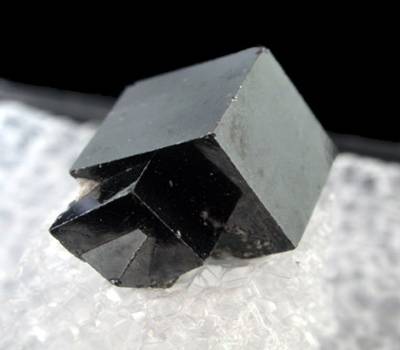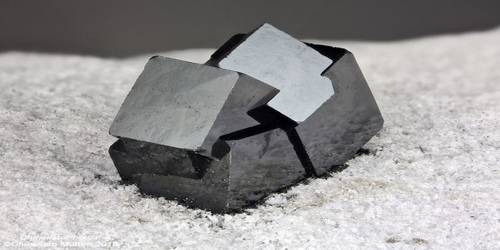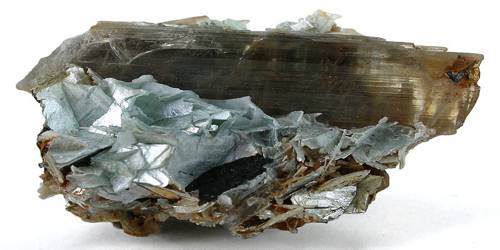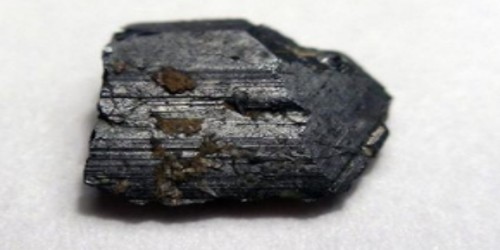Bixbyite is a manganese iron oxide mineral with chemical formula: (Mn, Fe)2O3. It is an uncommon mineral, distinguished by its dark, lustrous crystals that are often exceptionally formed. It is commonly associated with beryl, quartz, spessartine, hematite, pseudobrookite, hausmannite, braunite and topaz in pneumatolytic or hydrothermal veins and cavities and in metamorphic rocks. It can also be found in lithophysal cavities in rhyolite.
Bixbyite was named for the American mineralogist Maynard Bixby (1853–1935), responsible for its discovery in 1897.
General Information
- Category: Oxide minerals
- Formula: (Mn, Fe)2O3
- Crystal system: Isometric
- Crystal class: Diploidal (m3).

Properties
The iron/manganese ratio is quite variable and many specimens have almost no iron. It is a metallic dark black with a Mohs hardness of 6.0 – 6.5. It is a somewhat rare mineral sought after by collectors as it typically forms euhedral isometric crystals exhibiting various cubes, octahedra, and dodecahedra.
- Formula mass: 158.33 g/mol
- Color: Black
- Crystal habit: Massive to crystalline
- Cleavage: Imperfect on {111}, in traces
- Fracture: Irregular to uneven
- Mohs scale hardness: 6 – 6 1⁄2
- Luster: Metallic
- Streak: Black
- Diaphaneity: Opaque
- Specific gravity: 5.12
- Density: 4.95
As an ore of manganese, bixbyite is often under-appreciated. When found massive, it is usually associated with other manganese oxides and is impossible to differentiate. Although iron can substitute for the manganese in the structure by over 50%, many bixbyite samples are nearly pure manganese oxide.
Occurrence
Typical localities are Jhabua and Chhindwara districts, India and the Thomas Range in Juab County, Utah. It is also reported from San Luis Potosi, Mexico; northern Patagonia, Argentina; Girona, Catalonia, Spain; Sweden and South Africa.
Associated minerals include topaz, spessartine, beryl, quartz, Sanidine, pseudobrookite, hematite, and beraunite.
Information Source:
















